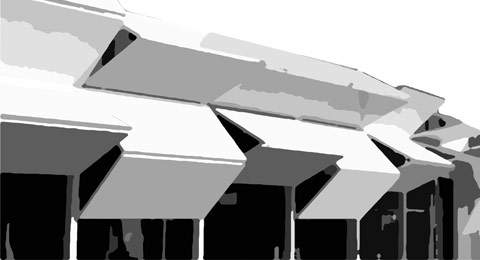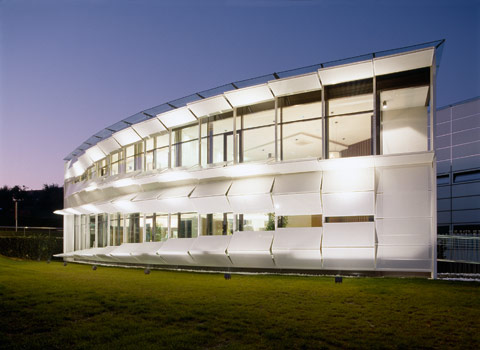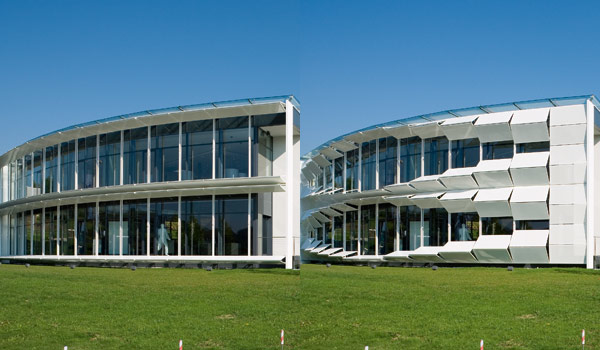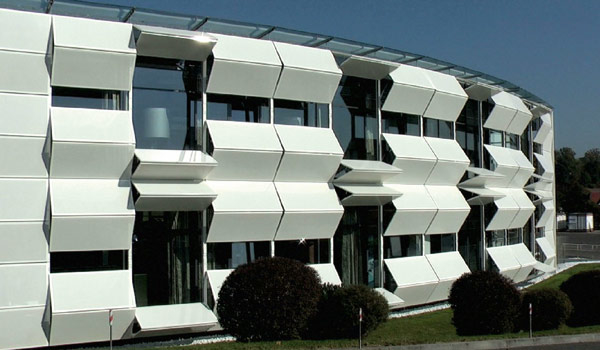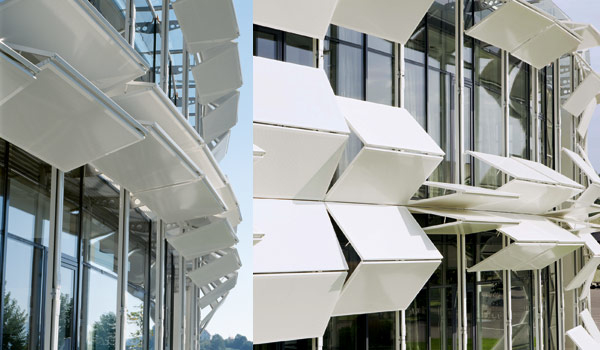KIEFER TECHNIC SHOWROOM
Arhitekte: Ernst Giselbrecht + Partner ZT GmbH
Web: www.giselbrecht.at
Fotografije: Paul Ott, Gisel Brecht
Fasade zgrada u prethodnim periodima, u mnogim slučajevima, su okarakterisane rasporedom prozora i osa, i često se na njima isticao površinski reljef sa arhitektonskim elementima iz relevantnog perioda ili stila. Struktura fasade takođe je uticala na plan osnove; značaj funkcije, bilo da se radi o značaju funkcije ili značaju korisnika prostorije, ogledao se u broju prozorskih osa te prostorije.
Naročito u slučaju poslovnih objekata, postojala je jasna struktura i broj osa se mogao unapred odrediti – određeni broj za direktora ili radnika višeg čina i manji broj za običnog radnika.
Sa uvođenjem prozorskih traka ove hijerarhije su napuštene. Danas je uobičajeno da se celokupna fasada radi u staklu i pojam transparentnosti i dalje predstavlja dominantnu odliku moderne arhitekture. Ova promena u arhitekturi rezultirala je ljudskom potrebom za individualnošću i komforom koji je potrebno ostvariti.
Iz ovog razloga, već neko vreme radimo sa dinamičnim fasadama koje mogu biti prilagođene varirajućim uslovima i individualnim potrebama. Ovi sistemi mogu se, takođe, kontrolisati i podesiti korišćenjem kompjuterskih programa kada korisnici nisu prisutni u prostoru. Prema tome, moguće je uspešno realizovati ovakve transparentne fasade i ujedno zadržati komforno okruženje za korisnike objekta.
Ove fasade se neprekidno menjaju, kako u skladu sa okruženjem tako i u skladu sa individualnim potrebama; svaki dan, svaki sat prikazuje novi “lik” i tako fasada dobija dodatnu ulogu dinamičke skulpture.
Napisali smo specijalnu koreografiju za nove Kiefer tehničke fasade koju možete pogledati u vidu video klipa na našoj internet prezentaciji.
Arh. DI Ernst Giselbrecht
KIEFER TECHNIC SHOWROOM
Architects / Arhitekte: Ernst Giselbrecht + Partner ZT GmbH
Web: www.giselbrecht.at
Photo: Paul Ott, Gisel Brecht
Up until relatively recently, a building’s façade could, in many circumstances, be characterised by its configuration of window arrangements and axes and often featured surface relief with architectural elements from a particular period or style. The structure of the façade has previously also had an impact on the floor plan of the building; whereby the importance of a rooms function or its user was reflected in the number of window axes it possesed.
Office buildings in particular would display a clear structure and the number of axes could be predetermined, for example there would be a certain number for a director or high-ranking counsellor and less for a civil servant.
With the introduction of window strips, these hierarchies were abandoned. Today it is commonplace for an entire facade to be glazed as the notion of transparency has continued to be the dominant feature of modern architecture.This move towards a more democratic architecture has resulted in common human needs such as comfort being elevated above individual egos.
For this reason we have been working for some time with dynamic façades that can be adapted to changing conditions and individual needs.These systems can also be controlled and optimised using computer programs when the room is empty. Thus it is possible to successfully realise these new transparent façades and still maintain a comfortable environment for the inhabitants of the building.
These façades change continuously in response to both environmental conditions and individual needs; each day, each hour shows a new “face”, and so the façade, while functional, is also a dynamic sculpture.
We wrote a dedicated choreography for the new Kiefer technic façades which can be seen in a video clip on our website.
Arch. DI Ernst Giselbrecht


